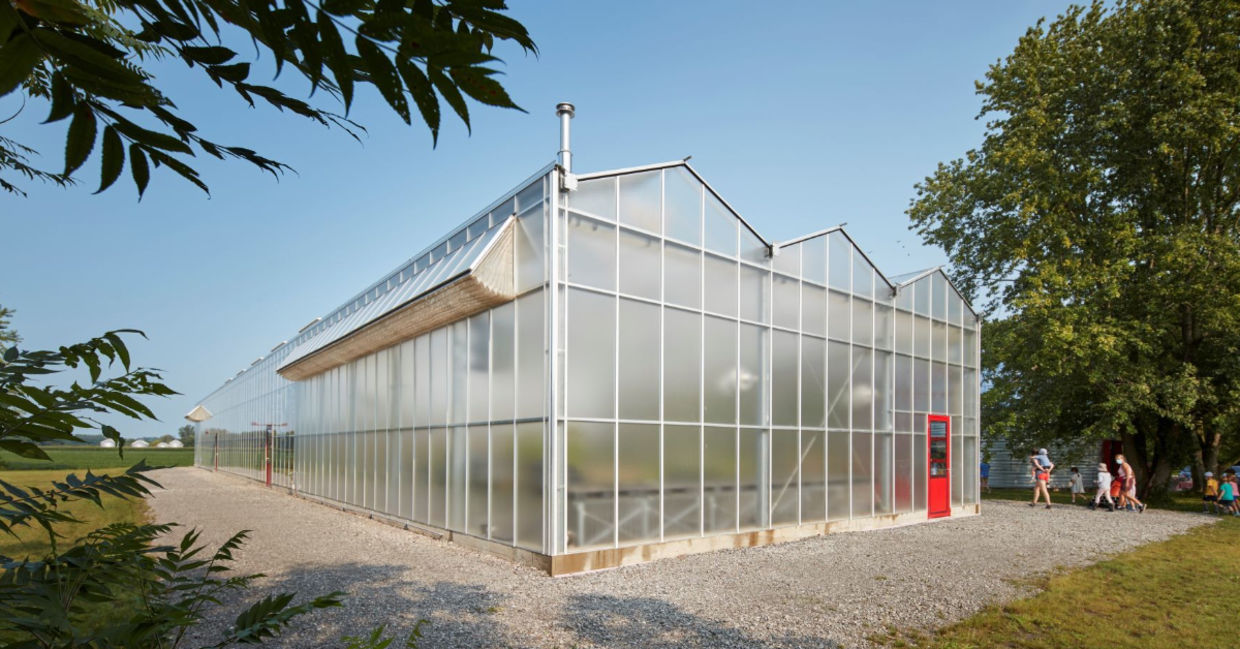
(Courtesy Granor Farm)
Greenhouses allow you to grow crops in a controlled environment almost all year long. This is especially important in cold climates like Michigan. But now, one organic vegetable and grain farm in this northern state is taking greenhouses one step further.
Granor Farm – located in Three Oaks near the shores of Lake Michigan – recently completed a greenhouse space, according to Fast Company, that is both luxurious and practical. The 7,300- square-foot (27.8 square meter) structure features frosted glass over a steel frame that is intended to protect young plants from the cold winters.
Designed by Chicago firm Wheeler Kearns Architects, the space isn’t being used just for growing plants. The new greenhouse is actually a multipurpose structure that features growing space on the two ends of the modular building, a large event space and a commercial kitchen in the center, taking farm to table to a whole new level.
Farm to table
Today, farm to table can mean anything that goes from a farm direct to the consumer without going through a store, according to The Spruce. This can mean anything from a simple farm stand, to a farm restaurant, to a special event held outdoors on a farm.
One company, Outstanding in the Field, features one-time events in the field. They describe themselves as a roving restaurant without walls and their mission is to connect diners to the land and the venues include farms, orchards, vineyards, and more.
View this post on Instagram
Combining an indoor growing space with a commercial kitchen and dining area makes Granor Farm’s farm to table concept truly unique, reported Fast Company. It’s part of the company’s commitment to be both a modern working farm and an educational center that teaches about where food actually comes from.
About the new space
Founded in 2002, the farm’s non-agricultural uses include a public farm store, self-guided tours, a farm camp for children, and a private farm to table space that features seasonal meals. Now, there is a fantastic new space to use for these activities.
It wasn’t easy to design a kitchen and dining area into a commercial greenhouse space because there had to be the right balance of ventilation and heating, architect Michael Kendall of Wheeler Kearns Architects explained to Fast company. One of the ways to overcome that was to include an automated shaded system in the glass ceiling that helps regulate temperature and blocks out the sun.
The event and kitchen space are separated from the growing areas by glass that allows diners (and campers) to actually see how their food was grown. For urban dwellers, this may be the closest they have come to actually being in a garden.
“We always wanted whoever was going to be in that center space, be it visitors, people enjoying dinners, or even just the staff, to always have that connection back to the landscape,” said Kendall.
“Whatever we did, we very much wanted it to be an agricultural vernacular structure,” he said. “We didn’t want to drop a UFO onto the site.”
YOU MIGHT ALSO LIKE:
Canada’s Home to the World’s Largest Rooftop Greenhouse
Iceland's Year-Round Greenhouses Are Powered by Volcanoes
Drought-Proof Cooling Houses Grows Tons of Healthy Produce in the Desert







